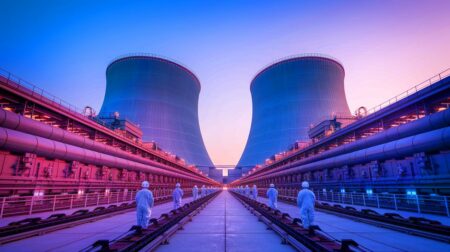| IN A NUTSHELL |
|
The urgent need to combat climate change has propelled scientists worldwide to explore innovative ways of transforming carbon dioxide (CO2) into valuable resources. Among these efforts, the conversion of CO2 into carbon monoxide (CO) is particularly promising, as CO serves as a crucial precursor for creating synthetic fuels. While traditional methods have been bogged down by inefficiencies and high costs, recent breakthroughs have drastically shortened processing times. Researchers from Tohoku University, Hokkaido University, and AZUL Energy have achieved an unprecedented reduction in conversion time, setting the stage for more viable industrial applications.
Revolutionizing CO2 Conversion Methods
The existing CO2-to-CO conversion techniques have been fraught with challenges, such as the use of costly materials, process instability, and lengthy durations that extend up to 24 hours. These hurdles have rendered traditional methods inefficient and impractical for widespread industrial use. However, the researchers introduced a groundbreaking technique utilizing phthalocyanines (Pcs), which are organic compounds commonly used as pigments and dyes. By employing a simple spray method, these Pcs were applied onto gas diffusion electrodes, forming direct crystalline layers on the surface.
This innovative approach not only simplifies the conversion process but also significantly reduces the time required, bringing it down to an astonishing 15 minutes. The use of cobalt phthalocyanine (CoPc) emerged as the most effective, demonstrating exceptional efficiency in converting CO2 to CO. This streamlined, graffiti-like method has proven to be a game-changer, offering a more feasible and sustainable solution for carbon capture and utilization.
Identifying the Best Catalyst for CO Production
The new method’s success extends beyond mere efficiency; it also showcases remarkable stability. The conversion process maintained consistent performance over 144 hours under a current density of 150 mA/cm². This long-term stability indicates the system’s potential for continuous and practical application in industrial settings. The secret to this performance lies in the direct crystallization of phthalocyanines, which results in densely packed molecules. This configuration facilitates the efficient flow of electrons necessary for the conversion process.
Notably, this Pc-based catalyst surpasses the industrial standard thresholds for both reaction rate and stability, marking a significant milestone in CO production technologies. As such, this advancement holds great promise as a next-generation solution for Carbon Dioxide Capture and Utilization (CCU), paving the way for more sustainable fuel production and reduced carbon emissions.

Potential Impacts and Future Directions
The implications of this research are profound, as the ability to convert CO2 into valuable chemicals efficiently could revolutionize the way industries approach carbon management. By turning a major environmental challenge into an opportunity for resource generation, this technology aligns with global efforts to achieve carbon neutrality. The advancement not only addresses the pitfalls of conventional methods but also opens up new avenues for the sustainable production of synthetic fuels.
Moreover, the enhanced conversion method offers a scalable solution that could be integrated into existing industrial frameworks, thereby significantly reducing the carbon footprint of various industries. As researchers continue to refine and optimize these techniques, the potential for broader applications and even more efficient processes is immense.
Exploring Broader Applications
Beyond its immediate application in fuel production, the CO2-to-CO conversion technology holds promise for various other industries. For instance, in the chemical sector, CO serves as a building block for numerous chemical reactions, offering possibilities for the creation of diverse chemical products. Additionally, the technology’s scalable nature makes it a viable option for deployment in sectors ranging from energy generation to manufacturing.
This research also sets a precedent for further exploration into alternative materials and methods that could enhance CO2 conversion processes. As scientists continue to innovate and improve, the potential for reducing carbon emissions and generating sustainable energy solutions becomes increasingly attainable. The question remains: how will these advancements shape the future of energy and environmental management?
Did you like it? 4.5/5 (20)









Wow, this is incredible! Can it be scaled up for industrial use already? 🌟
Isn’t it risky to rely so heavily on a single technology for carbon reduction?
How much does this new process lower the cost of CO production?
Thank you, scientists! This is a step forward for a cleaner planet. 🌍
Can this technology be applied to other greenhouse gases?
I hope this doesn’t end up being too good to be true. 🤔
How soon can we expect this to be implemented widely?
I’m skeptical. How do we know this isn’t just another overhyped breakthrough?
Amazing! But what about the environmental impact of producing phthalocyanines?
This sounds like magic. Are the results peer-reviewed?